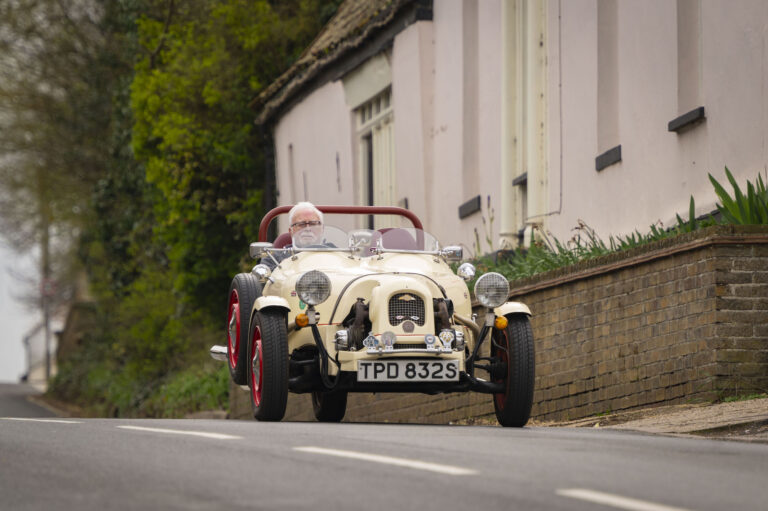When Phil Bridgen first set eyes on his Ford Capri, it was on the back of a recovery truck and potentially set for the scrapyard.
The front end of the 1982 Capri Cabaret had been stoved in following a hefty shunt, and abandoned by its female owner.
“A friend of mine had been asked to recover the vehicle,” says Phil, who was working as an MoT tester at a garage in Harold Hill, Romford at the time.
“He turned up with this thing on a transporter and said ‘are you interested in this?’ I looked at it, but I thought it would be too much money because it was only four or five years old, it had only done 17,000 miles, and the interior was immaculate.
“I jokingly said £300 thinking that would be the end of it and he’d drive away, but he said ‘it’s yours’ and unloaded it.”
Before you think he must have been mad to buy the bashed-up Ford, even if it was for £300, part of Phil’s previous job at a Henlys dealership was to fit new bodyshells to accident-damaged Jaguars.
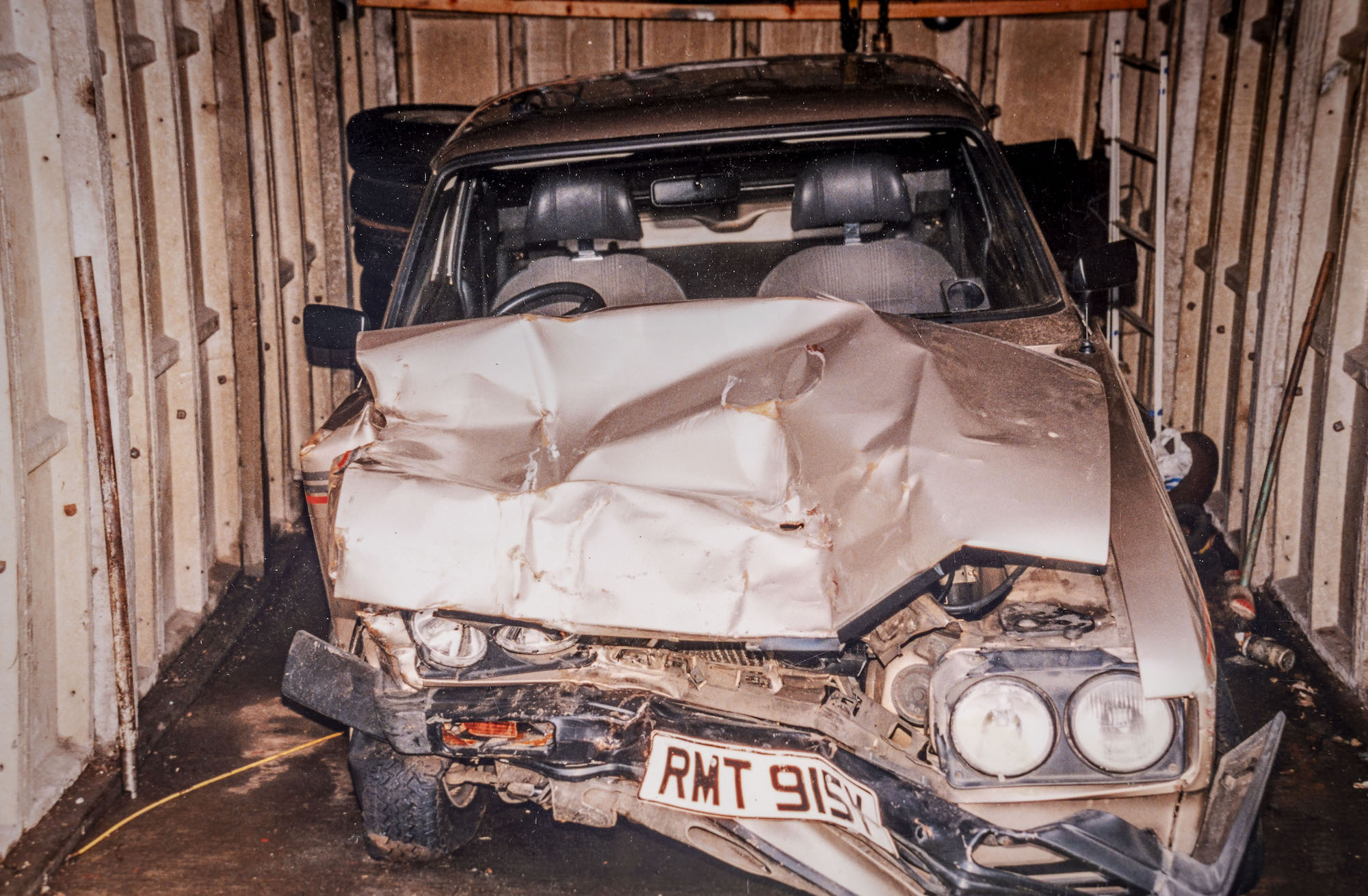
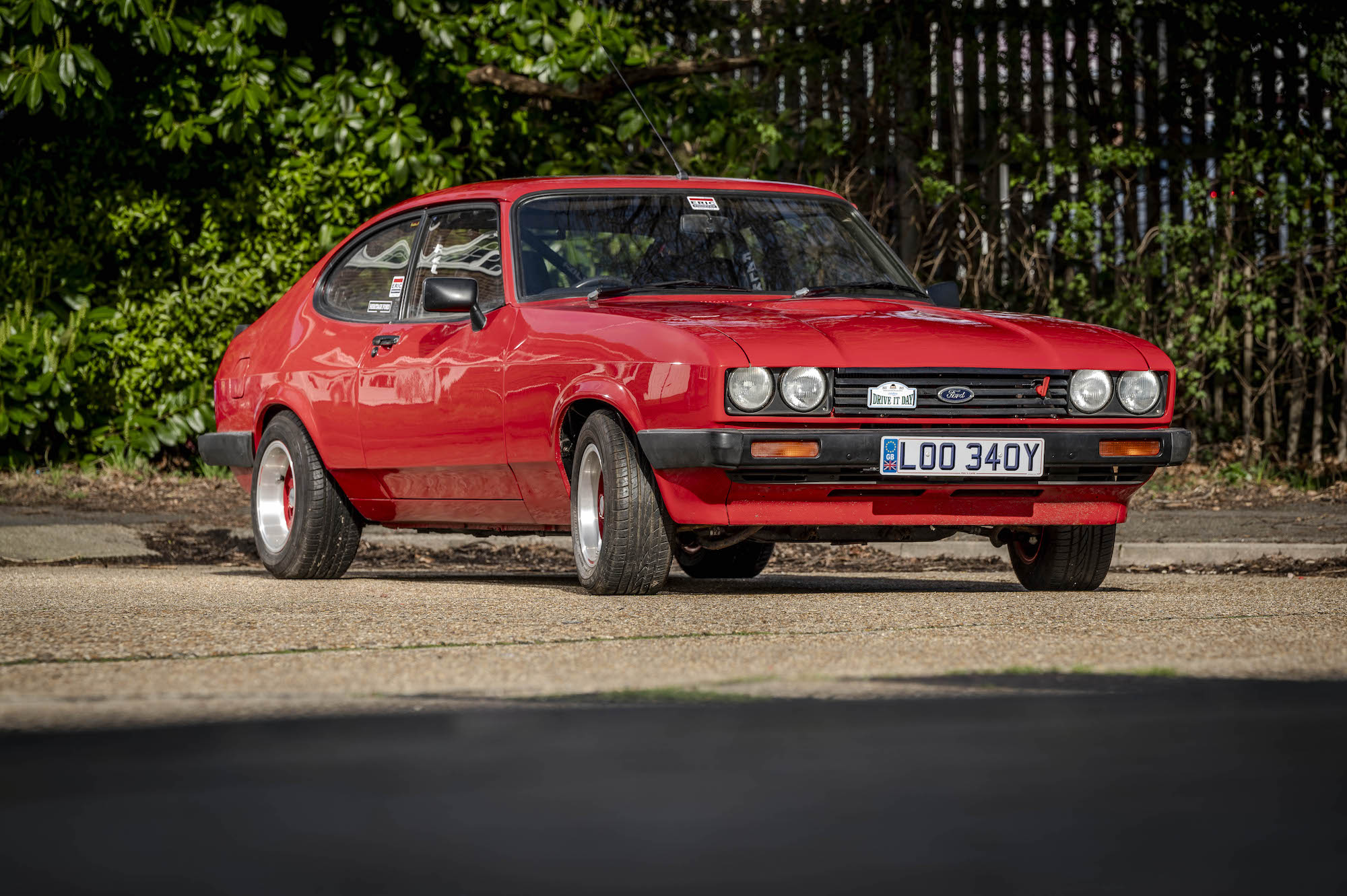
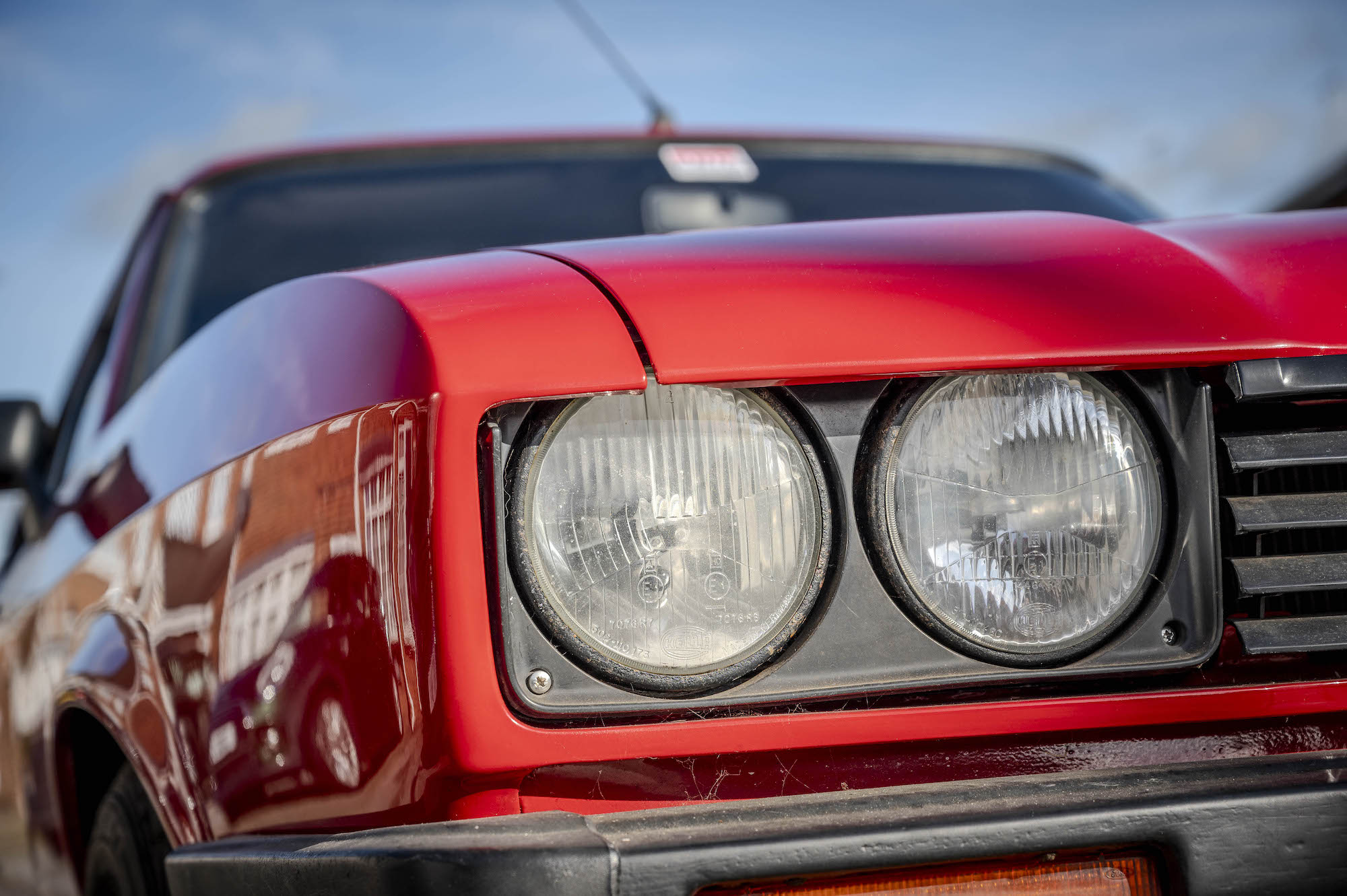

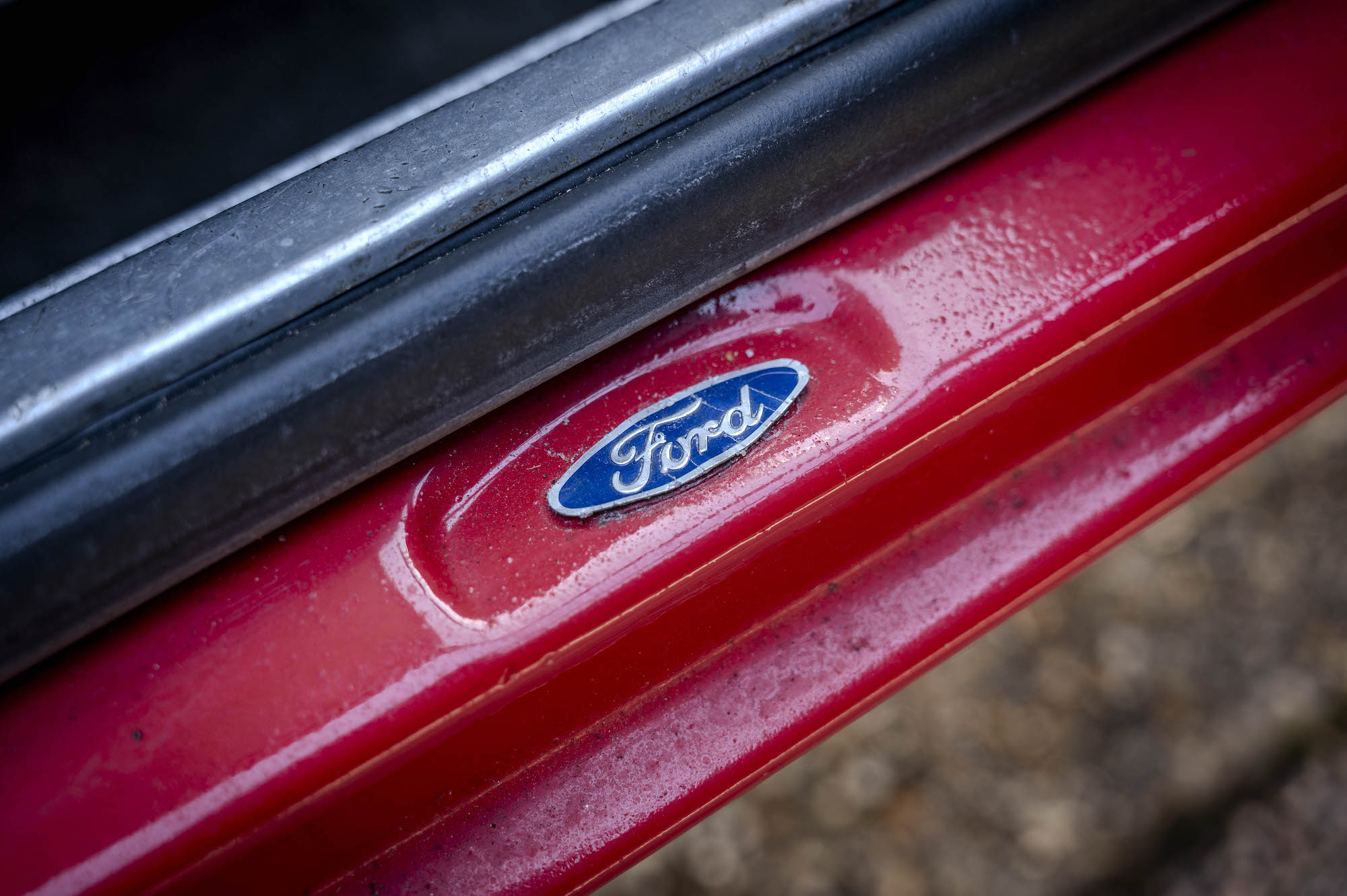
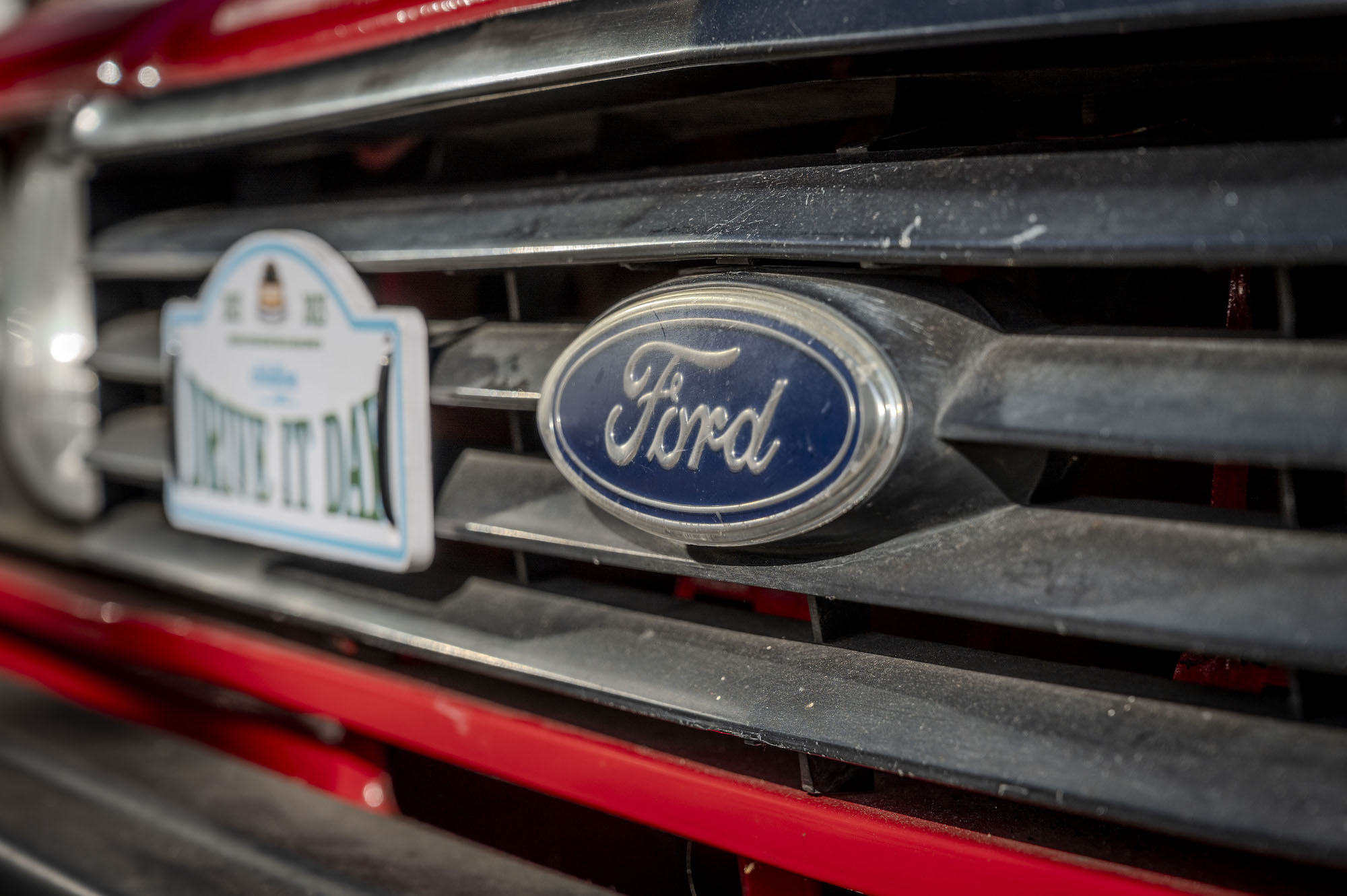
“I’d have two cars side by side, and I’d take the damaged one apart and put all the old bits on the new car with a freshly painted new bodyshell,” he says. “So when I got the Capri, I fancied doing a bodyshell swap for myself and this was an ideal candidate.”
The Capri Cabaret was a limited edition model featuring two-tone paint, a sun-roof, and alloy wheels, with a Ghia centre console and tinted glass.
Phil’s car had a 1600cc engine mated to a four-speed gearbox, but it’s fair to say there’s very little Cabaret left in the Ford now.
Back in 1987, when Phil bought the car, Capri production had drawn to a close, and the Cabaret model was long gone.
“I went to what was then Hensmans in early 1988, the Ford main dealer in Brentwood, nonchalantly leant on the counter and said ‘have you got a Capri bodyshell?’” he says.
“After they’d picked themselves up off the floor laughing, they said ‘you’re being serious’, and I said ‘yeah, I am’.
“After looking it up, they said they could only get a five-speed Laser shell, because the four-speed had been out of production for a long time.”
READ MORE ABOUT SOME OF OUR GREATEST CLASSIC CARS WITH

A series of articles on our Cult Classics site.
After parting with £1,226.47 (receipt pictured), the new shell, in light grey primer, was delivered to his workplace at Farringdon Service Station a couple of weeks later.
“I asked for a red one but, because they had stopped production, they could only get one in primer,” he says, the shell coming with no bonnet, tailgate, or glass, and a panel for the sunroof laying on the passenger floor.
“Four of us went out, lifted it off the transporter and plonked it on the floor. There it was – now I’ve got to get on with it.”
As well as his former job body-swapping Jaguars, Phil had prior experience of resurrecting his own cars, primarily his first car as a teenager.
“There were two Minis in a lock up garage, and a friend of mine said I could clear the lock up for a tenner,” he remembers.
“One Mini was on its side and the other one was just stuffed in there. The one I decided to use had a damaged front, but the one that was on its side had a good front, so I took the front off and put that on the other one.

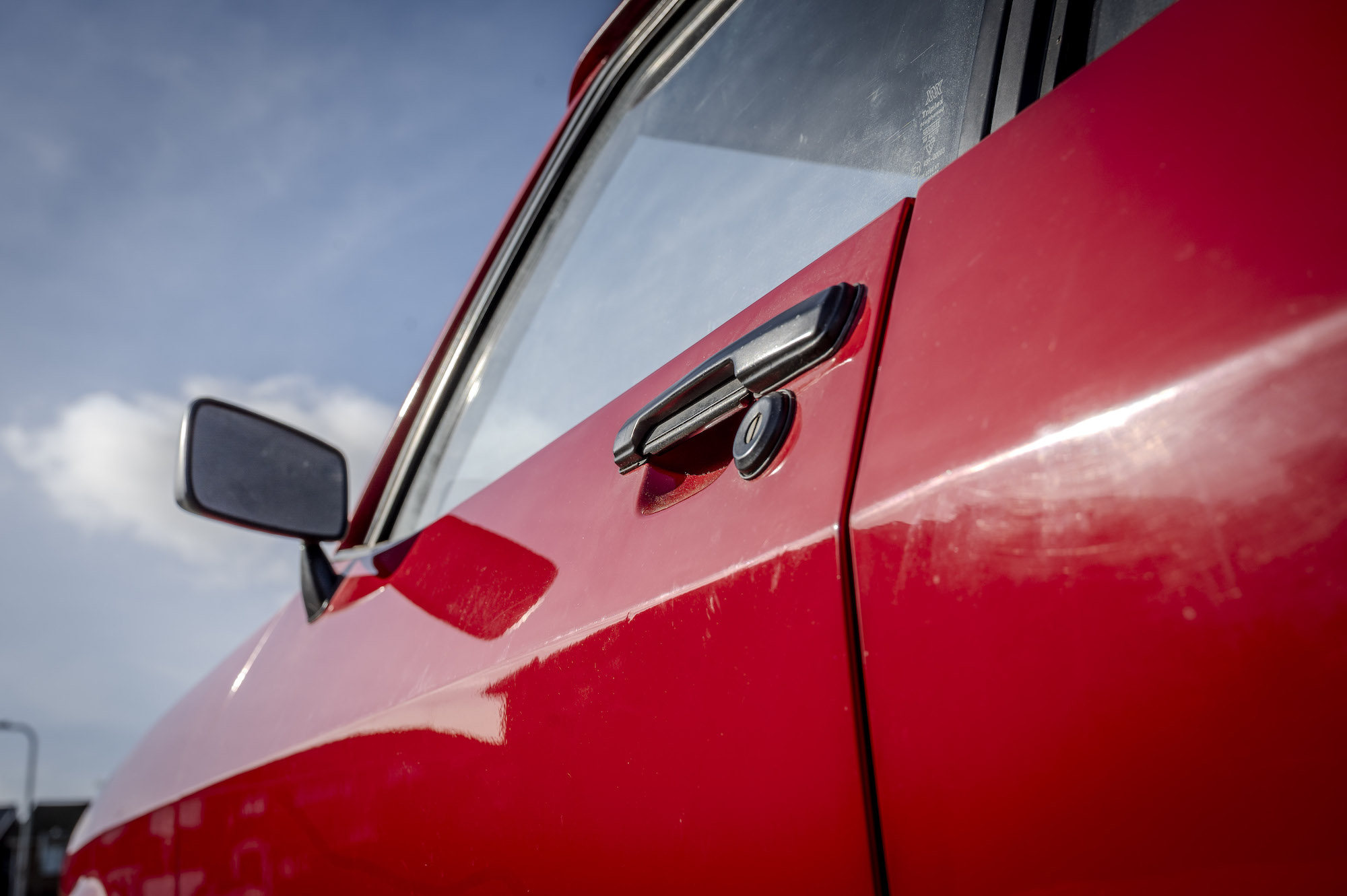



“I had that for a few months before it got nicked from outside a police station in Harold Hill while I was at a youth club across the road. It was never found, and it had all my work tools in it because I was an apprentice at Stewart and Arderns, which went on to become Henlys.”
There followed a succession of Ford Cortinas and Granadas, before the Capri landed in his lap.
After putting the chassis on wheels, and finding a slightly damaged bonnet from a Ford dealer in Grays, Phil got the car on to a transporter and over to a garage at Gallows Corner for paint.
“Three days later they delivered it back in Rosso Red, which was a colour of the XR3, at the time the car to have,” he says.
The 1600cc Cabaret engine, with a new radiator and the addition of twin Weber 40 carbs, was swapped into the new shell, along with the existing tailgate, glass, doors, and interior, with a new bumper and lights finishing off the front end.
For many years, the new-look Capri was Phil’s commuter car, with a Granada used for family trips with his wife and two children.
81.5% of customers could get a cheaper quote over the phone
Protect your car with tailor-made classic car insurance, including agreed value cover and discounts for limited mileage and owners club discounts

“Then I was driving home just up the road from where I lived and a young lad in his Fiesta decided he didn’t like the back of it and modified it for me,” he says. “At the time he was busy looking at a couple of girls walking down the road, not paying much attention to where he was going, and he drove into the back of me.
“There wasn’t a lot of damage, just the rear panel and the boot floor and bumper.”
That was in about 2008, and the annoyance of the accident was compounded by the unexpected loss of his father the very next day following an aortic aneurysm.
Suddenly, getting the car repaired was the last thing on his mind.
“The funeral was coming up, mum wanted stuff sorted out, and I just dropped the car, ignored it,” he remembers. “It wasn’t my priority at the time, and it ended up under a cover in my dad’s car port where he used to park his Volvo.”
The Capri hadn’t turned a wheel for 10 years when Phil’s mother passed away in 2018.
“The sale of her property was divided between me and my two sisters, and my wife asked me what I was going to spend the money on, maybe a holiday?” he says.
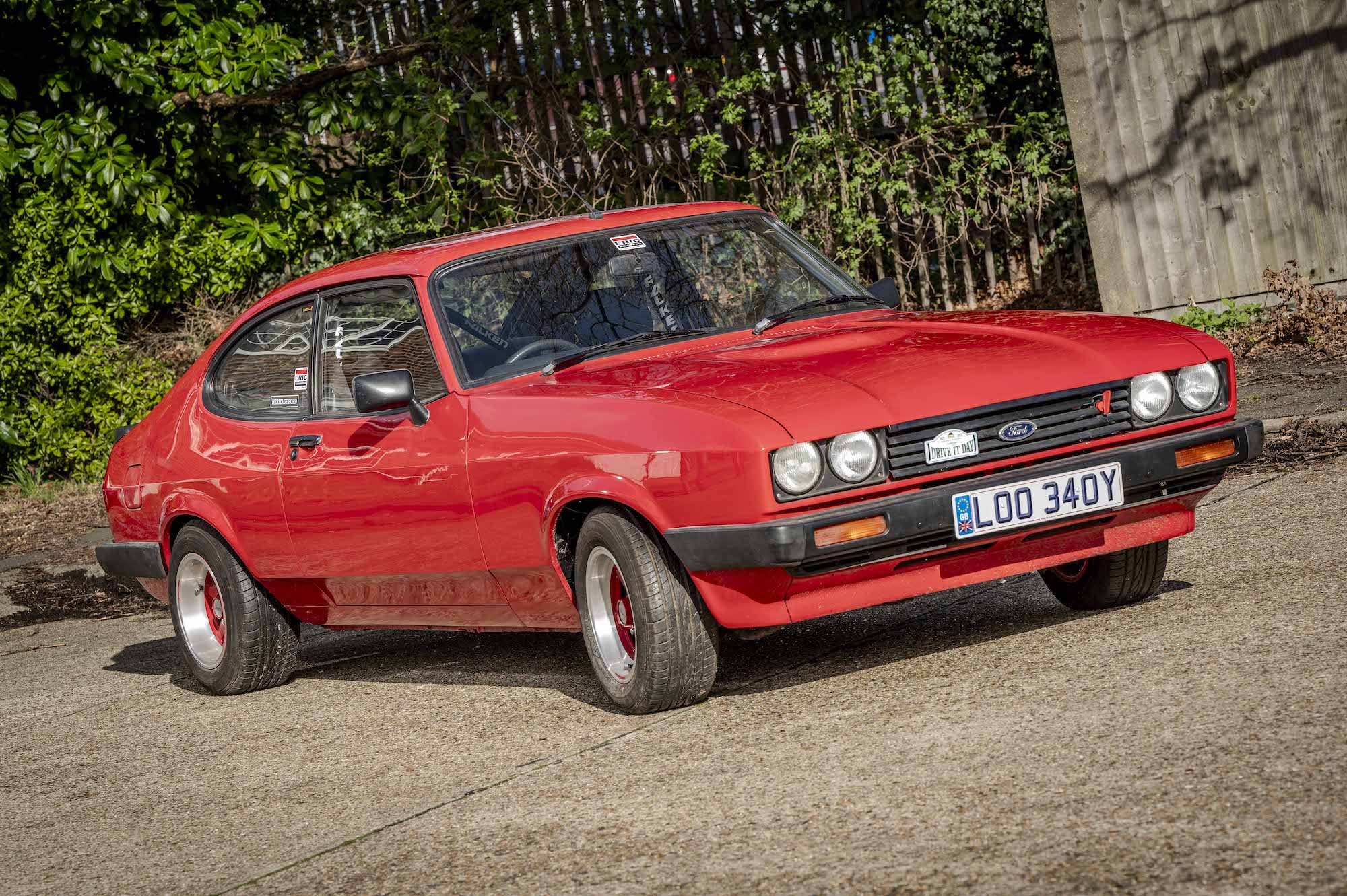
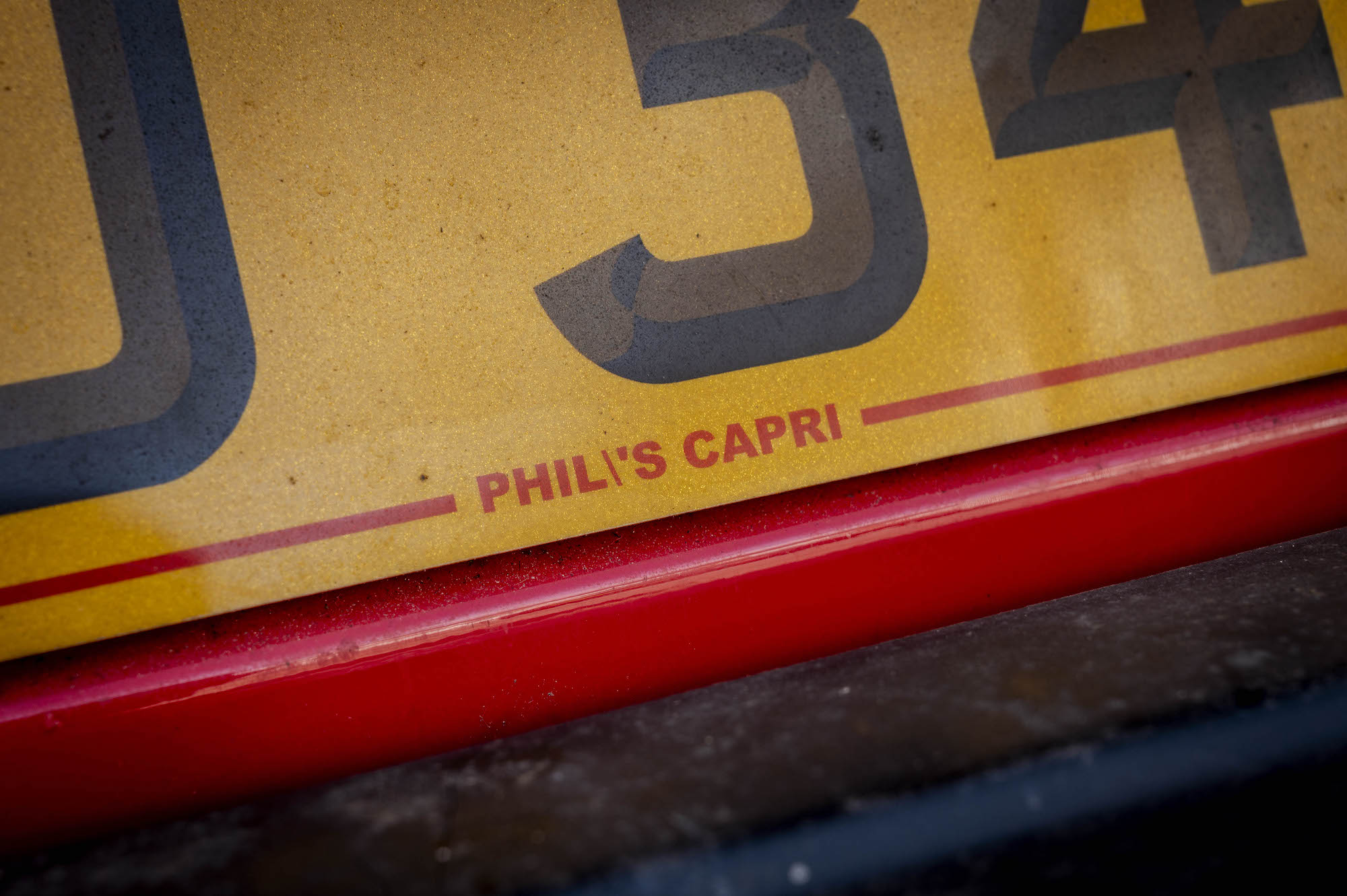
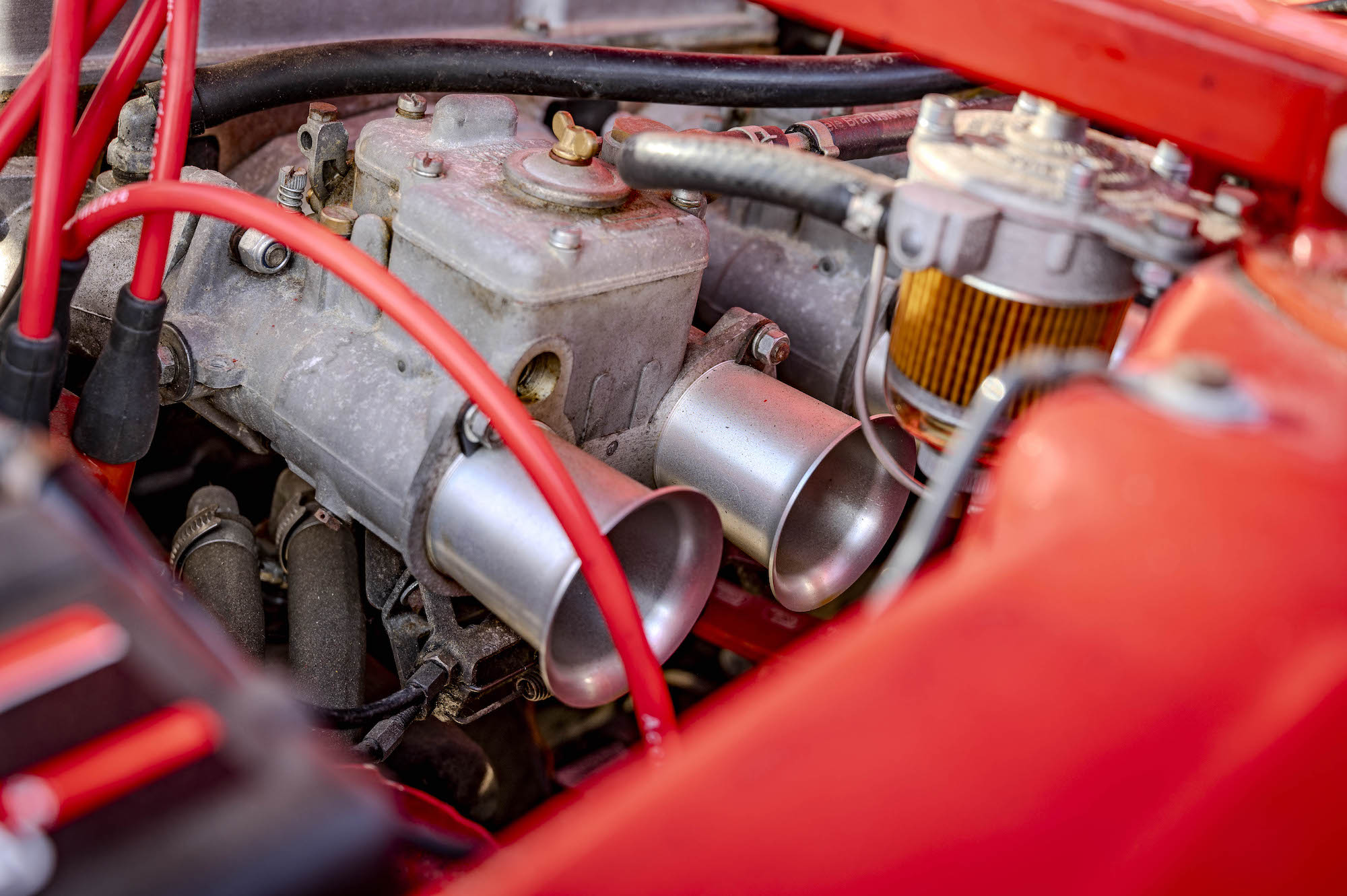
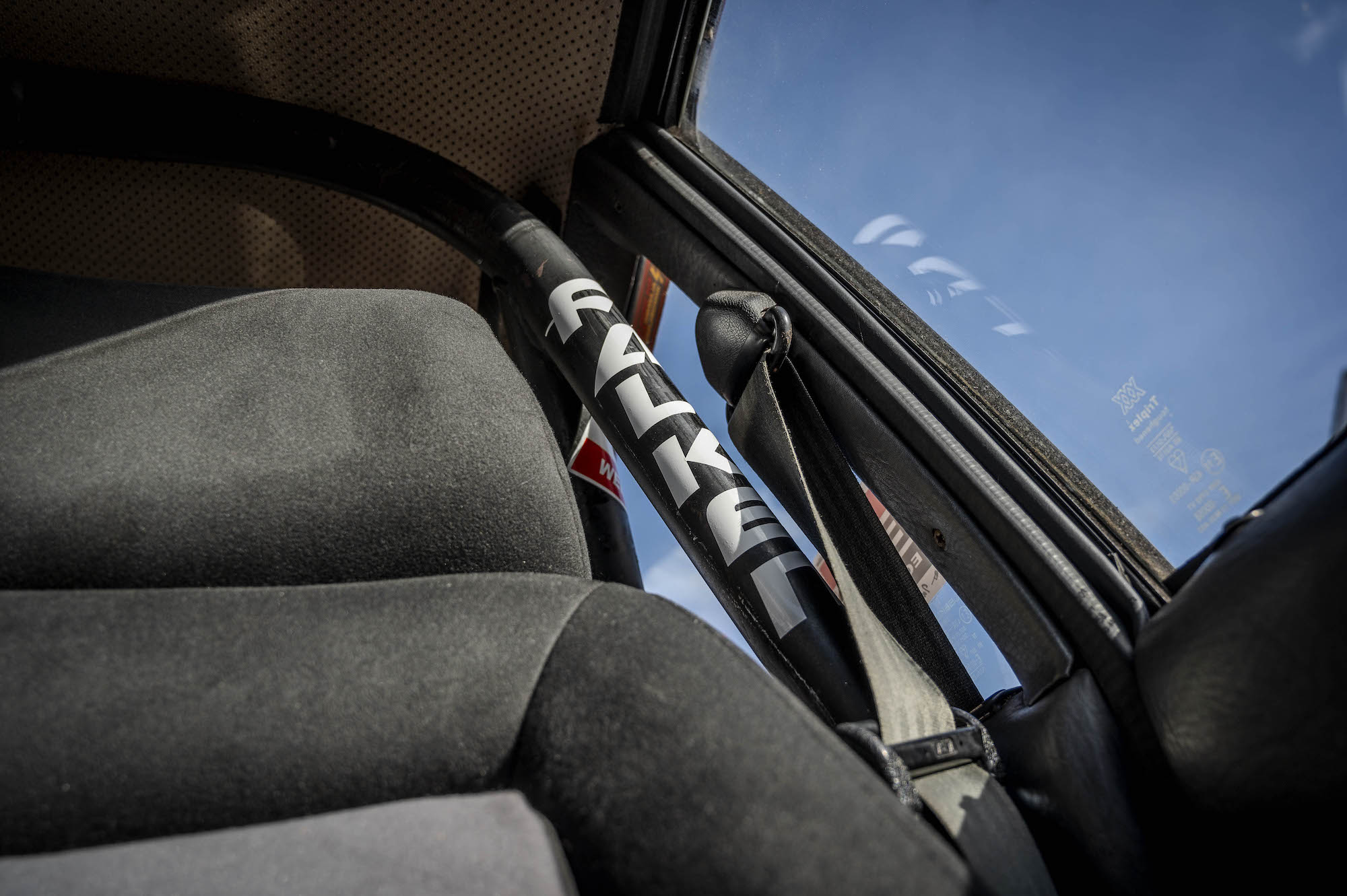
“I said to her ‘the only thing that I’ve ever owned that’s gone up in value, and that I’ve had for a lot of years, is sitting out there under a cover’, so she said ‘it’s your money’.”
So the Capri underwent its next transformation, with a lot more work than just repairing the rear panel and boot floor – original Ford items sourced for “a lot of money” from Northern Ireland.
Over many years of working in the motor trade, Phil had been offered all sorts of parts for the Capri from customers and friends in the industry.
“People used to come to me all the time for MoTs and, because the car was parked outside, people would get interested and offer me bits for it,” he says. “One lad came along and said ‘I’ve got a roll cage for that if you want it – you can have it, it’s in my way in the garage’. ‘Yeah, all right’. So I put the rear section in, not for any track days or anything.
“Then an old boy who used to do little car repairs said to me ‘I’ve got some bits for that if you want them’. He was retiring, and he came down with a box of bits, air filters, oil filters, plugs, and in the bottom of the box were two brand new Weber 45 carburettors.
READ MORE ABOUT SOME OF OUR GREATEST CLASSIC CARS WITH

A series of articles on our Cult Classics site.
“I said ‘do you know these are in here…?’ ‘Yeah, you can have ‘em, I don’t want them’. They sat in my garage for years – I put them to one side with the intention of using them one day.”
He finally got the chance when he bought a 2-litre, Pinto 205 block as used in the Sierra Cosworth.
“I got it off a stock car guy and took it to an engineering place, who rebored it and put in new pistons,” says Phil, 69.
The twin Weber 45s were bolted on, along with a brand new Burton Stage 3 cylinder head (another gift), and a Kent fast road cam.
A Recaro seat set replaced the originals, while a set of Compomotive wheels, acquired cheaply, were fitted and colour-matched to the body, which underwent a respray.
“Over the years the original cellulose paint had faded to a pink, so I had it done in clear over red so it won’t fade,” says Phil, who spent the final 12 years of his career as a goods vehicle standards assessor for the DVSA.
The Capri was ready in time to attend the wedding of his brother-in-law’s son, a classic car fan.
So after a decade off the road, what was it like to drive the Ford again?
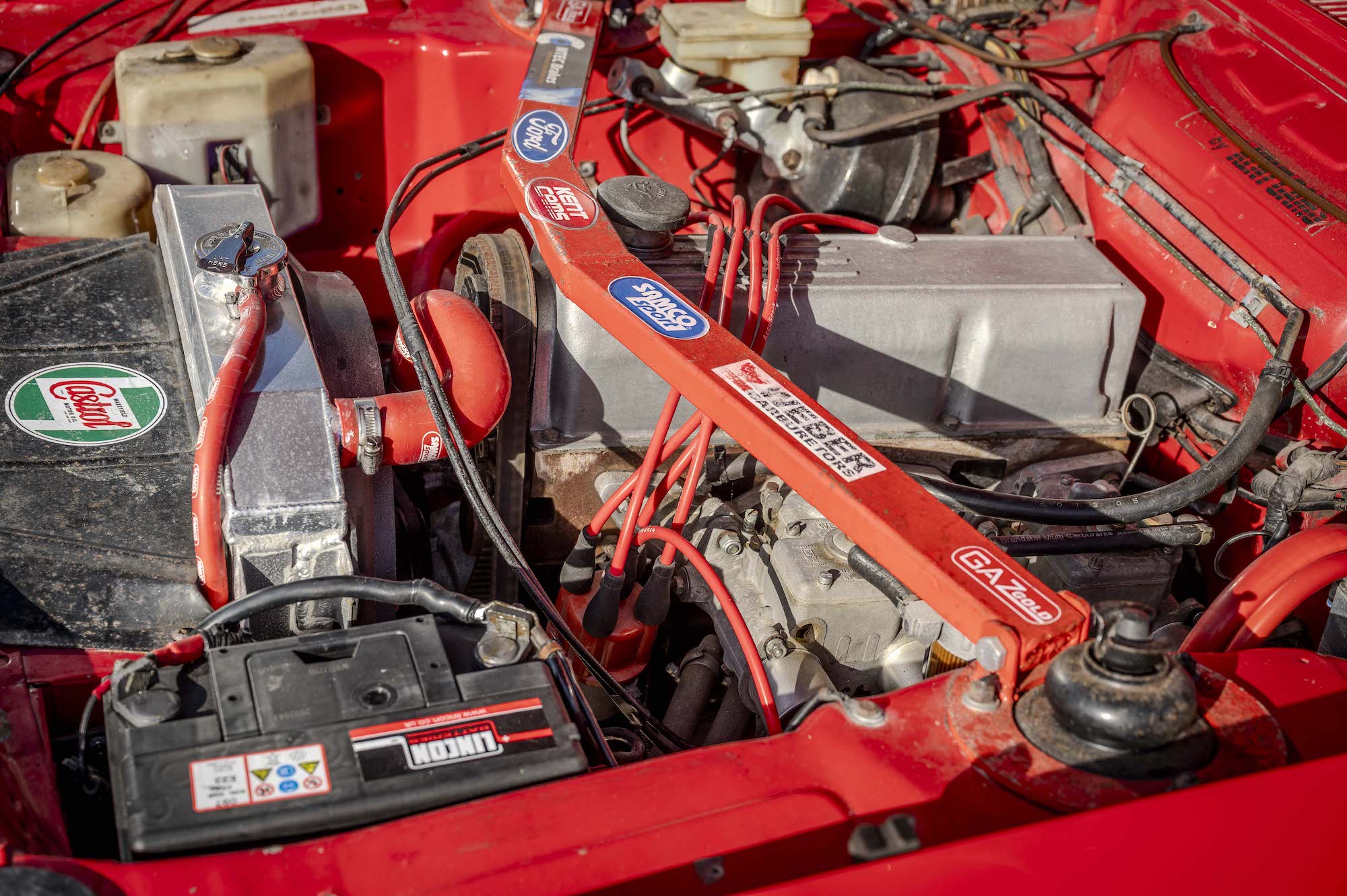
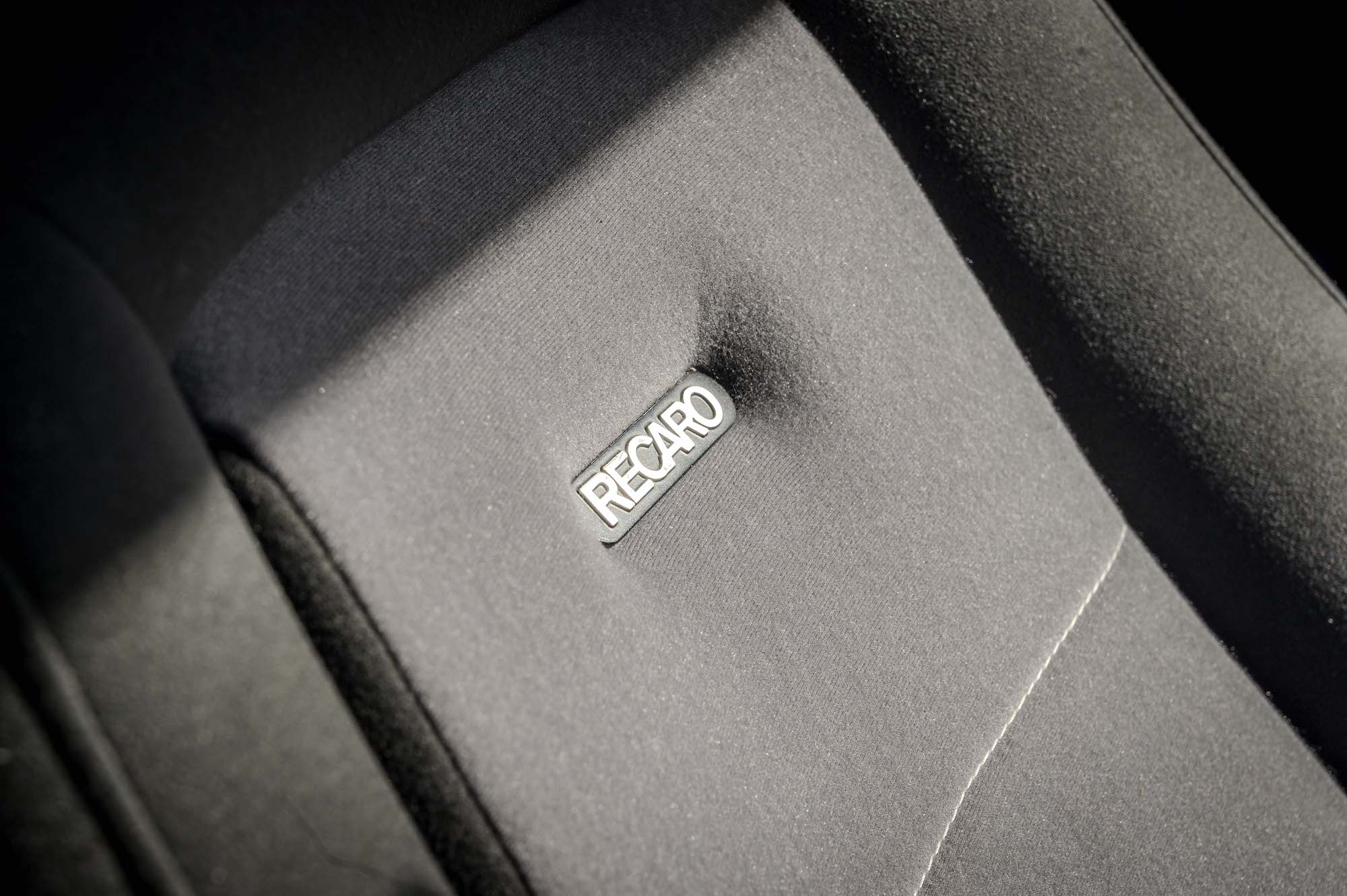
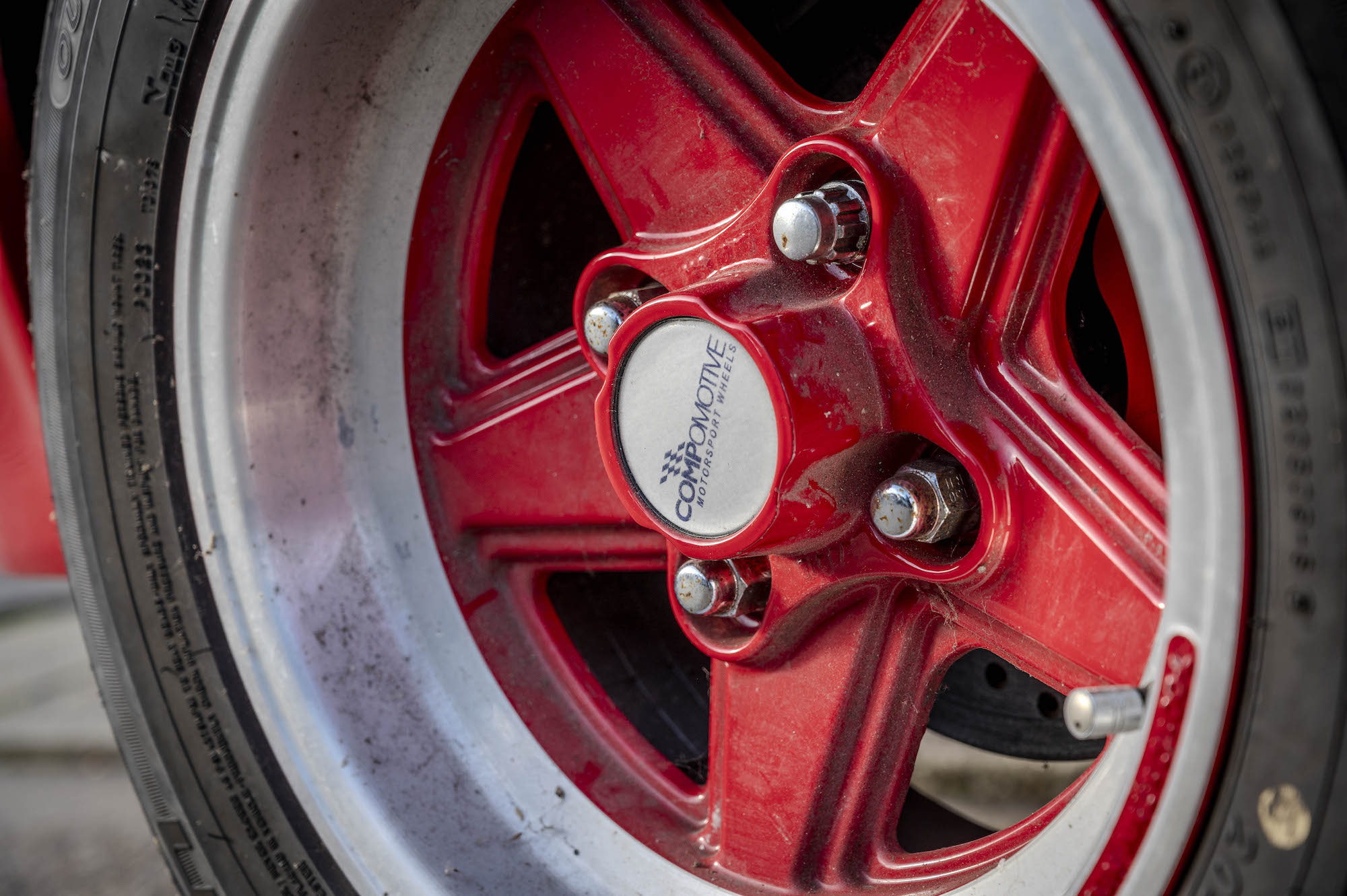
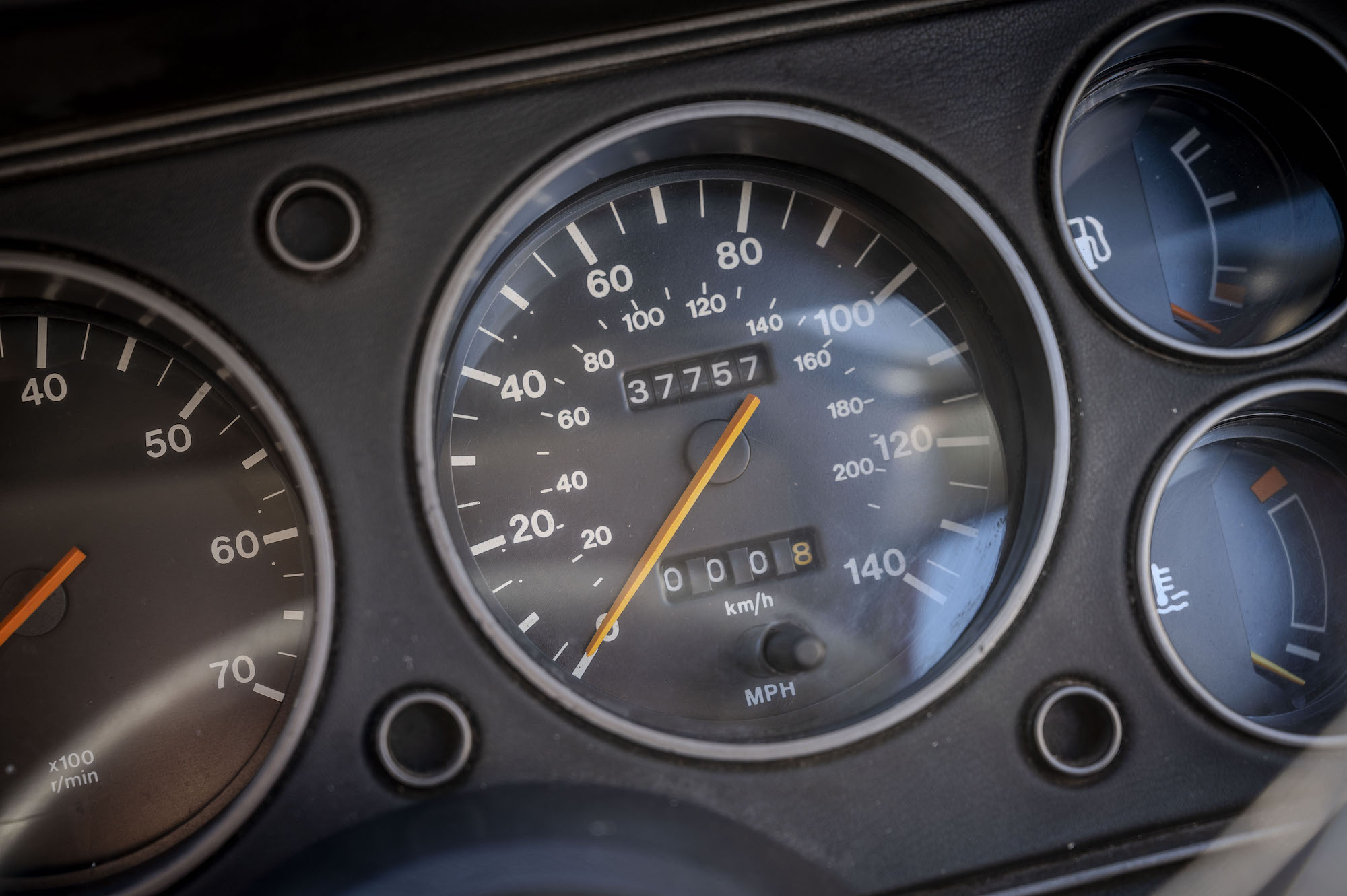
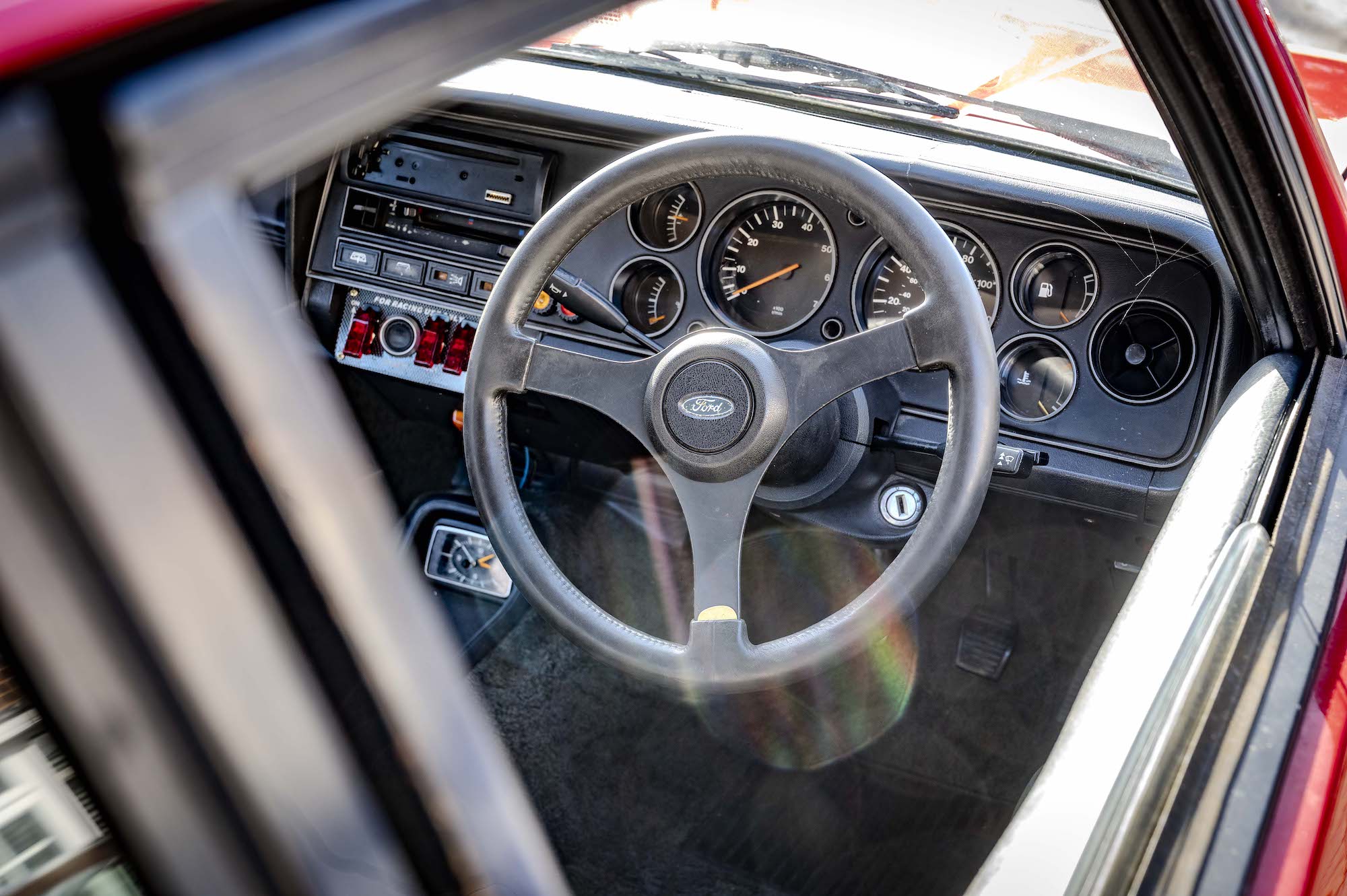
“It was horrible,” he laughs. “It hasn’t got power steering, so getting in a car after having power steering for years, it was quite a handful to manoeuvre at low speeds, though once it’s moving it’s fine.
“I had a bit of an issue with the brakes, because modern car brakes are very good and you tend to get used to them.
“In the older car, it could sometimes be very vague, or felt like it wasn’t going to stop, or have a long pedal travel.
“But I’ve recently fitted some high-spec four-pot callipers to the front with the vented and drilled discs. Today was the first day I’ve driven it and tried the brakes and they’re very good, so I’ll be happier to drive it now I know the brakes are a lot better.”
Since its rebuild, it’s been little used, mostly because of a starting issue that Phil thinks he’s finally resolved.
“It’s been a bit of an animal to start,” he says, “so I’ve been wary about taking it anywhere in case it doesn’t start and I’ll get embarrassed. I think I’ve eventually sorted it out with a new starter motor and other bits and pieces. So now, with the summer coming, hopefully I’ll be able to get out in it a bit more.”
Phil is a member of the Eric Equipped car club, a scene he prefers to the Capri owners club he had joined in the late ‘80s.
“I went to a couple of Capri meetings at a pub in Brentwood, and because the car was Rosso Red, the first thing people would say is ‘it’s not the right colour mate’, or ‘that badge is wrong’,” he says.
“I wasn’t really interested in that kind of thing – I’m just a petrolhead, I just like cars, which have been part of my life all my life.”
The Erics therefore suit him down to the ground, with an eclectic group of vehicles, many of them modified, owned by car enthusiasts who are not obsessed with originality.
“There are American muscle cars, a Model T Ford, HA Vivas with Cosworth engines in, all sorts of stuff, and nobody’s ever going to go down there and say ‘that’s not right, that shouldn’t be on that car’,” says Phil, who attends one of the Eric meetings at Wickford on the last Saturday of every month.
“People are more likely to ask ‘how did you get away with fitting that gearbox in there?’ They’re interested, and it’s the kind of club for me. It’s brilliant, with nice friendly people.”
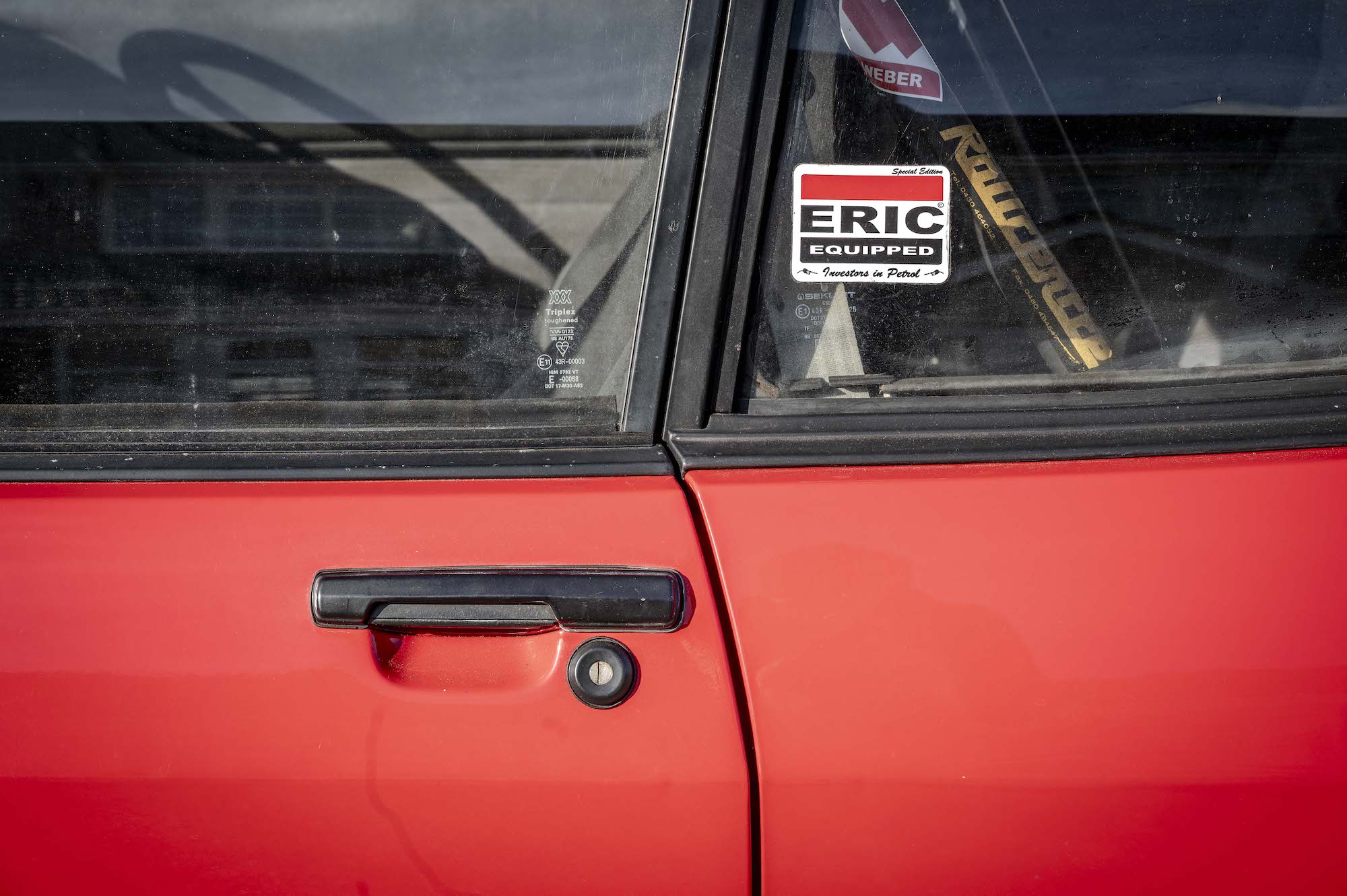
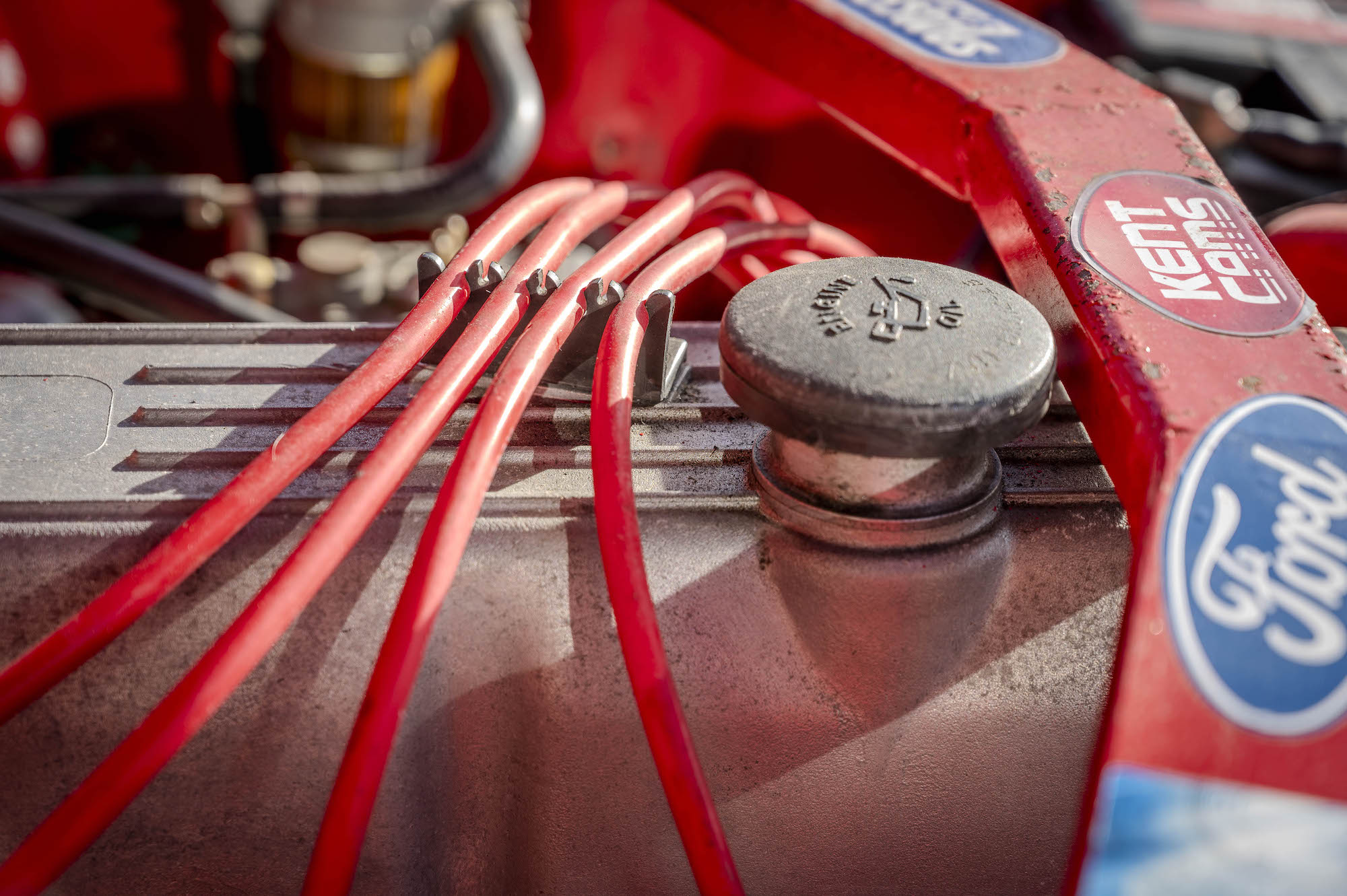
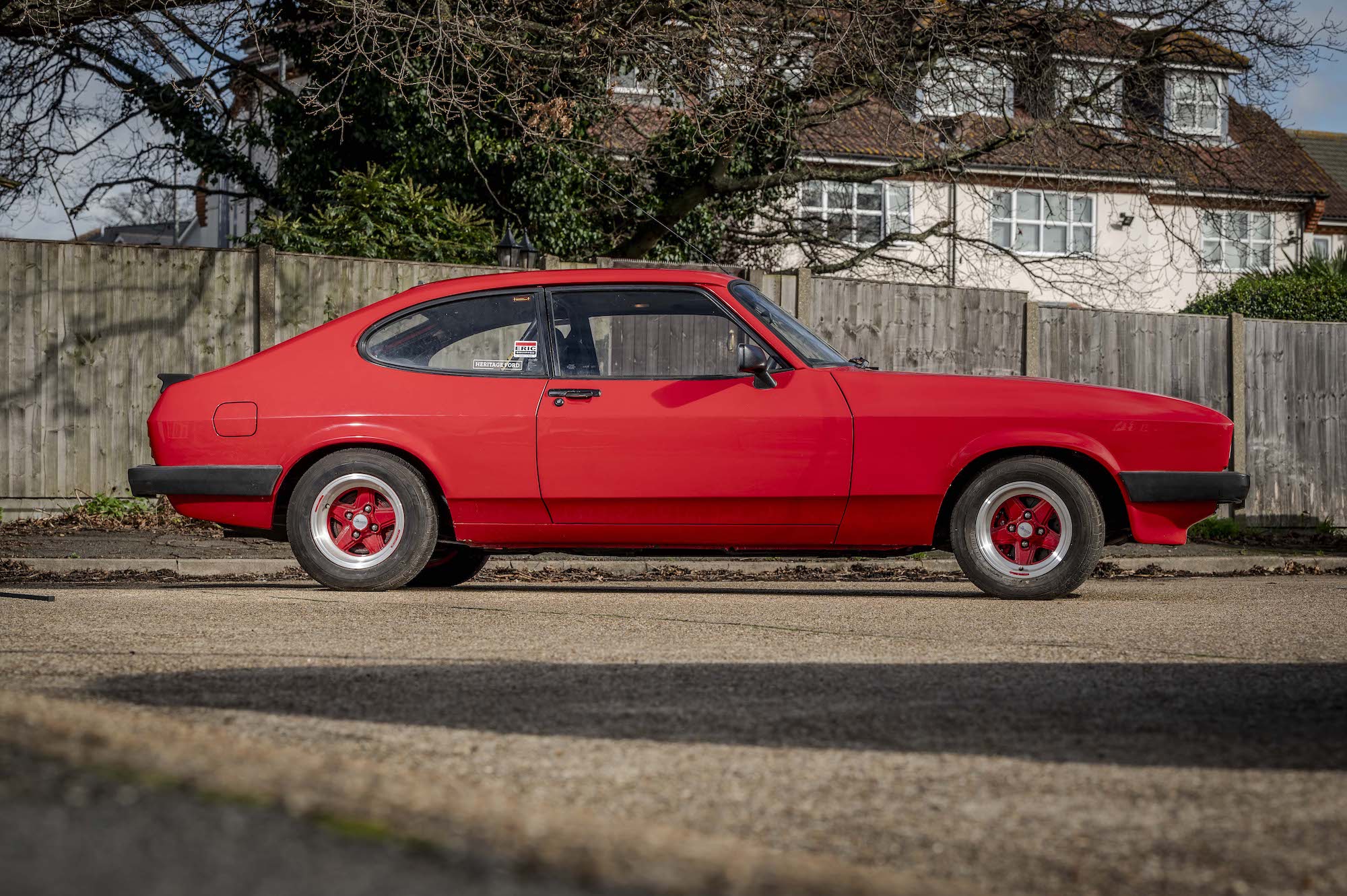
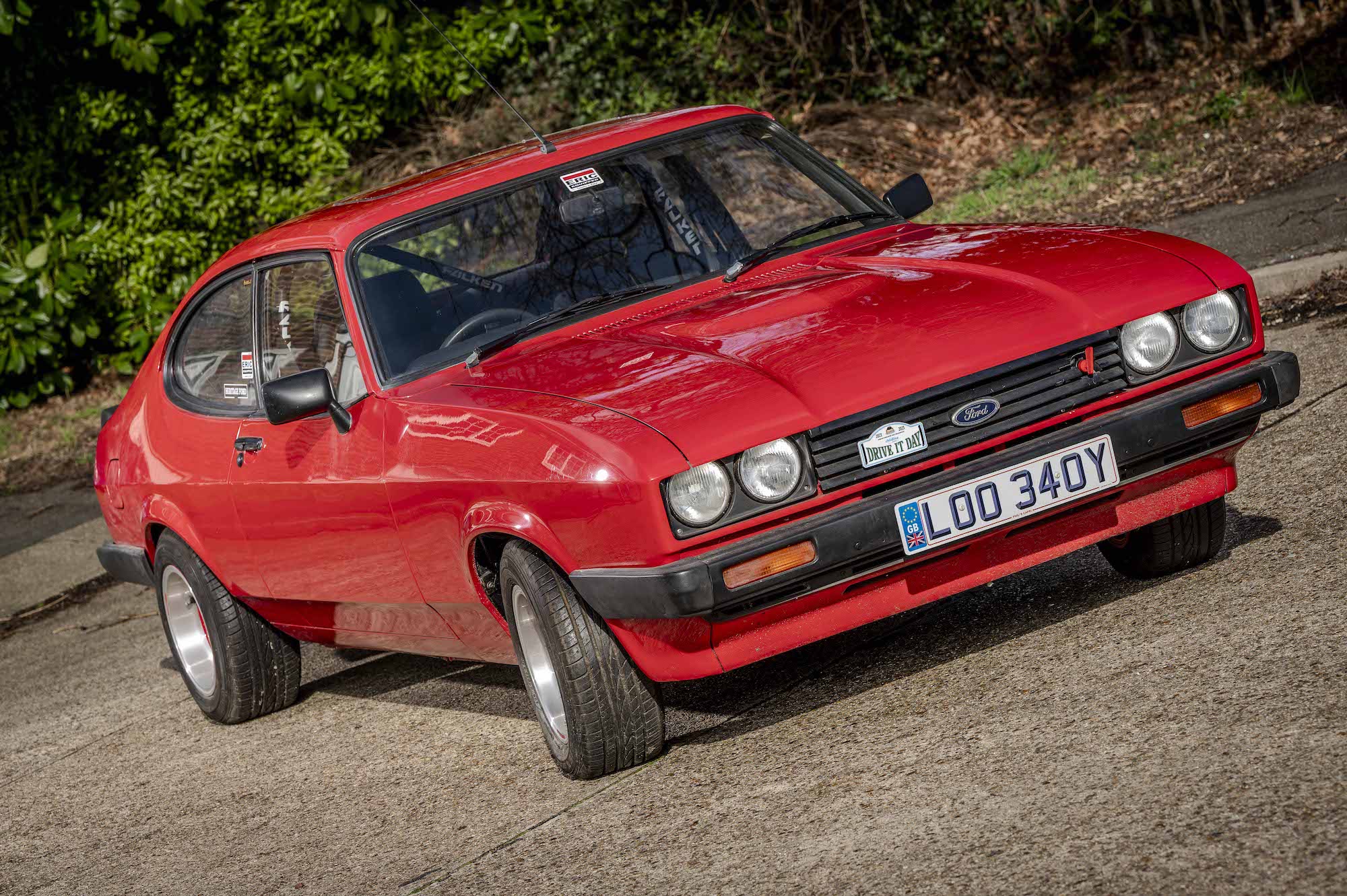
Phil says the car prompts plenty of memories in others when he’s out on the road, with waves and flashed lights from pedestrians and motorists.
“When I went to register it as a historic vehicle at the Post Office, a nice lady behind the counter said ‘ooh, lovely, a Capri, my first boyfriend had a Capri’,” he says. “Out came the phone, I showed her a picture, and she said ‘oh that brings back a lot of memories’. It evokes that kind of thing.”
The old car also holds plenty of memories for Phil’s two now grown up children, Kate and John, who works in the motor trade and has inherited his father’s love of cars.
“They both loved the car growing up,” says Phil. “John has got his eyeballs on it, ‘dad, can I have your car?’ ‘No you can’t, not yet!’”
Having spent years getting the Capri exactly how he wants it, he certainly has no intention of selling it any time soon.
“I would be very sad to lose it,” he says. “A lot of blood sweat and tears has gone into it, and I’m sure there’ll be a lot more – I’m always tinkering with it.”



